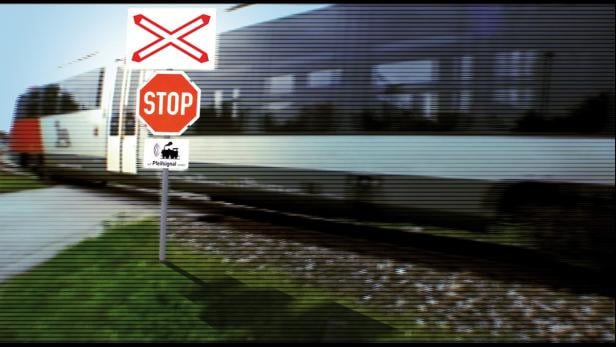
Smartphone App for Secure Railway Crossings
Dieser Artikel ist älter als ein Jahr!
Every year there are about 100 accidents at railway crossings in Austria and some of them are deadly. They mainly occur at crossings which are not equipped with technical safety systems. Despite acoustic signals and high visibility it is important to pay attention at a railway crossing. To avoid such situations the traffic engineering company Thales is currently developing a system which takes advantage of the increasing number of Smartphone users. The app NavTrain uses ÖBB data in order to warn traffic of dangerous railway crossings.
A Train Cannot Get Out of the Way
A number of YouTube videos showing crashes between trains and cars point out how dangerous a railway crossing can be. Also Günter Dinhobl, who works for the Department for Research and Development of the ÖBB on the improvement of railway crossings, has seen some of those videos. He recalls an old video shown on the British TV-show Top Gear, where the most secure car at that time, a Renault Espace, was destroyed by a train. `The car folded up like aluminium foil.`
For many years now the ÖBB have tried to get the message across: a train cannot get out of the way. The most important job of train operators is to raise awareness among drivers. 90 percent of all accidents occur because of carelessness, complete disregard for safety or impatience. Often safety systems, such as red lights, are ignored and supposedly audible signals not heard. This is the point where NavTrain can be used as an additional warning mechanism.
Visual and Acoustic Warnings
At first the user receives a basic warning on the smartphone or navigation device by means of visual and acoustic signals. If this is ignored then another warning is planned whereby the location of the crossing is cross-checked with current train schedules. The app then says whether a crossing is `open, closed, out of order or unknown`. If a crossing is `closed` then you must not cross the rails as a train is coming.
The prototype of NavTrain was developed as an Android app. 3G-data transfer was preferred to the traffic message channel (TCM), the standard channel for current traffic information on navigation devices. With NavTrain about 250 to 500 messages are sent per minute – depending on the volume of train traffic – which would have overloaded the TCM. However, the mobile communications standard GSM-R does have this capacity.
Successful Test in Lower Austria
After successful prototype-tests the ÖBB and Thales started a real-life pilot study in Bad Fischau, Lower Austria, where six railway crossings were used as a test area. The testing phase ran from November 2010 to February 2011. Altogether NavTrain was installed on 16 smartphones.
According to Thales, the app has proven reliable in real-life situations. Ninety-eight percent of data were transferred via the existing GSM-R infrastructure with a lapse of an average of 2.5 seconds between the train safety system and the app; a sufficiently safe gap. The operators noticed a considerable increase in attentiveness at railway crossings amongst users of the NavTrain app.
At the moment Thales is operating a broad roll-out of NavTrain and negotiations with some regional train operators have already started. Due to budgetary constraints, smaller train operators have to keep on using level crossings, as they cannot afford costly, bridges or underpasses. This will continue as long as there is no mandatory conditions placed on them by the railway authority of the Ministry of Transport.
Additional Option, not a Replacement
While the ÖBB considers the basic warning given by NavTrain as useful, the second-stage warning is not being pursued at the moment, as there are still too many legal, technical and psychological questions to be answered.
ÖBB-expert Günter Dinhobl sees a problem where railway lines run parallel to streets, as users would be warned continuously of the arrival of trains, even if they are not intending to cross. `This could also be a step backwards, as car drivers could become used to the warnings and ignore them.`
Furthermore, the following fact should be taken into account: in most of the accidents happening at railway crossings involve locals living in the surrounding 10 to 20 kilometres, as they are less likely to use a navigation device for that area. The ÖBB sees NavTrain as a useful additional option, but not as a replacement for vigilance. Also, in the future the use of a smartphone or a navigation device might not be that common.
`We are absolutely in favour of the forwarding of information if it is definitely proven that the use of the app does not provoke poor behaviour on behalf of the users`, says Dinhobl. Above all, car drivers should pay attention to the red light in front of them, not to some display on the dashboard.
Kommentare